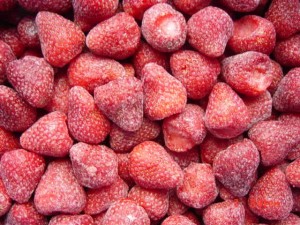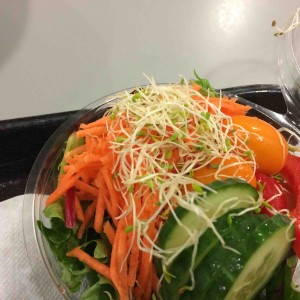Beginning in the summer of 2008, the deaths of two Toronto nursing home residents in were attributed to listeriosis infections. This eventually prompted an August 17, 2008 advisory by the Canadian Food Inspection Agency (CFIA) and Maple Leaf Foods, Inc. to avoid serving or consuming certain brands of deli meat as the products could be contaminated with Listeria monocytogenes.
 When genetic testing determined a match between contaminated meat products and listeriosis patients on Aug. 23, 2008, all products manufactured at Maple Leaf Foods plant 97B were recalled and the facility closed
When genetic testing determined a match between contaminated meat products and listeriosis patients on Aug. 23, 2008, all products manufactured at Maple Leaf Foods plant 97B were recalled and the facility closed
Several weeks later, the company determined that organic material trapped deep inside the plant’s meat slicing equipment harbored Listeria, despite routine sanitization that met specifications of equipment manufacturers. In total, 57 cases of illness were detected, including 24 deaths, connected to the consumption of the plant’s contaminated deli meats.
Notable from the paper:
Plant inspections identified several areas of concern. A building construction project was initiated in April 2008. There was structural damage and poor maintenance in certain rooms containing RTE product and evidence of condensate dripping onto unpackaged finished product in a common refrigerated storage room. IMP documentation indicated that Listeria spp. were detected at least 16 times between May 1 and August 16, 2008 in routine environmental swabs of food contact surfaces on lines A and B, 2 other production lines (lines C and D), and associated equipment. In response to each positive finding, the IMP staff sanitized production line surfaces and other areas where bacteria could grow. However, there was no analysis of trends over time to identify the underlying cause of the contamination. The cleaning and disinfection procedures at the IMP were inadequate. In addition, employee flow between rooms created opportunities for cross-contamination of finished product.
Experts who investigated the source of product contamination at the IMP concluded that contaminated mechanical meat slicers were the most likely cause (Weatherill, 2009). As observed in previous outbreaks, meat slicers can provide a site for the growth of L. monocytogenes and cross-contamination of finished products (Tompkin, 2002). Sanitation procedures used prior to the outbreak were ineffective at removing organic material harbored within the slicer.
 As I have long maintained, the best food producers, processors, retailers and restaurants will go above and beyond minimal government and auditor standards and sell food safety solutions directly to the public. The best organizations will use their own people to demand ingredients from the best suppliers; use a mixture of encouragement and enforcement to foster a food safety culture; and use technology to be transparent — whether it’s live webcams in the facility or real-time test results on the website — to help restore the shattered trust with the buying public.
As I have long maintained, the best food producers, processors, retailers and restaurants will go above and beyond minimal government and auditor standards and sell food safety solutions directly to the public. The best organizations will use their own people to demand ingredients from the best suppliers; use a mixture of encouragement and enforcement to foster a food safety culture; and use technology to be transparent — whether it’s live webcams in the facility or real-time test results on the website — to help restore the shattered trust with the buying public.
And the best cold-cut companies should stop dancing around and explicity tell pregnant women, old people and other immunocompromised folks, through labels or point-of-sale information, don’t eat this food unless it’s heated (watch the cross-contamination).
Abstract
A multi-province outbreak of listeriosis occurred in Canada from June to November 2008. Fifty-seven persons were infected with 1 of 3 similar outbreak strains defined by pulsed-field gel electrophoresis, and 24 (42%) individuals died. Forty-one (72%) of 57 individuals were residents of long-term care facilities or hospital inpatients during their exposure period. Descriptive epidemiology, product traceback, and detection of the outbreak strains of Listeria monocytogenes in food samples and the plant environment confirmed delicatessen meat manufactured by one establishment and purchased primarily by institutions was the source of the outbreak. The food safety investigation identified a plant environment conducive to the introduction and proliferation of L. monocytogenes and persistently contaminated with Listeria spp. This outbreak demonstrated the need for improved listeriosis surveillance, strict control of L. monocytogenes in establishments producing ready-to-eat foods, and advice to vulnerable populations and institutions serving these populations regarding which high-risk foods to avoid.
Multi-Province Listeriosis Outbreak Linked to Contaminated Deli Meat Consumed Primarily in Institutional Settings, Canada, 2008
Foodborne Pathogens and Disease, Volume: 12 Issue 8: August 10, 2015
Currie Andrea, Farber Jeffrey M., Nadon Céline, Sharma Davendra, Whitfield Yvonne, Gaulin Colette, Galanis Eleni, Bekal Sadjia, Flint James, Tschetter Lorelee, Pagotto Franco, Lee Brenda, Jamieson Fred, Badiani Tina, MacDonald Diane, the National Outbreak Investigation Team, Ellis Andrea, May-Hadford Jennifer, McCormick Rachel, Savelli Carmen, Middleton Dean, Allen Vanessa, Tremblay Francois-William, MacDougall Laura, Hoang Linda, Shyng Sion, Everett Doug, Chui Linda, Louie Marie, Bangura Helen, Levett Paul N., Wilkinson Krista, Wylie John, Reid Janet, Major Brian, Engel Dave, Douey Donna, Huszczynski George, Di Lecci Joe, Strazds Judy, Rousseau Josée, Ma Kenneth, Isaac Leah, and Sierpinska Urszula
http://online.liebertpub.com/doi/abs/10.1089/fpd.2015.1939#utm_source=ETOC&utm_medium=email&utm_campaign=fpd










